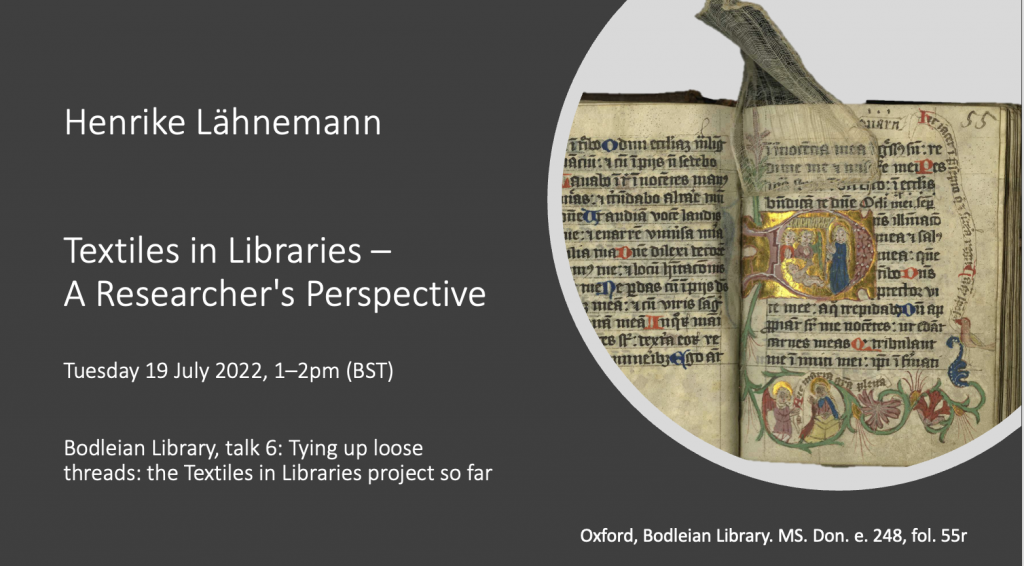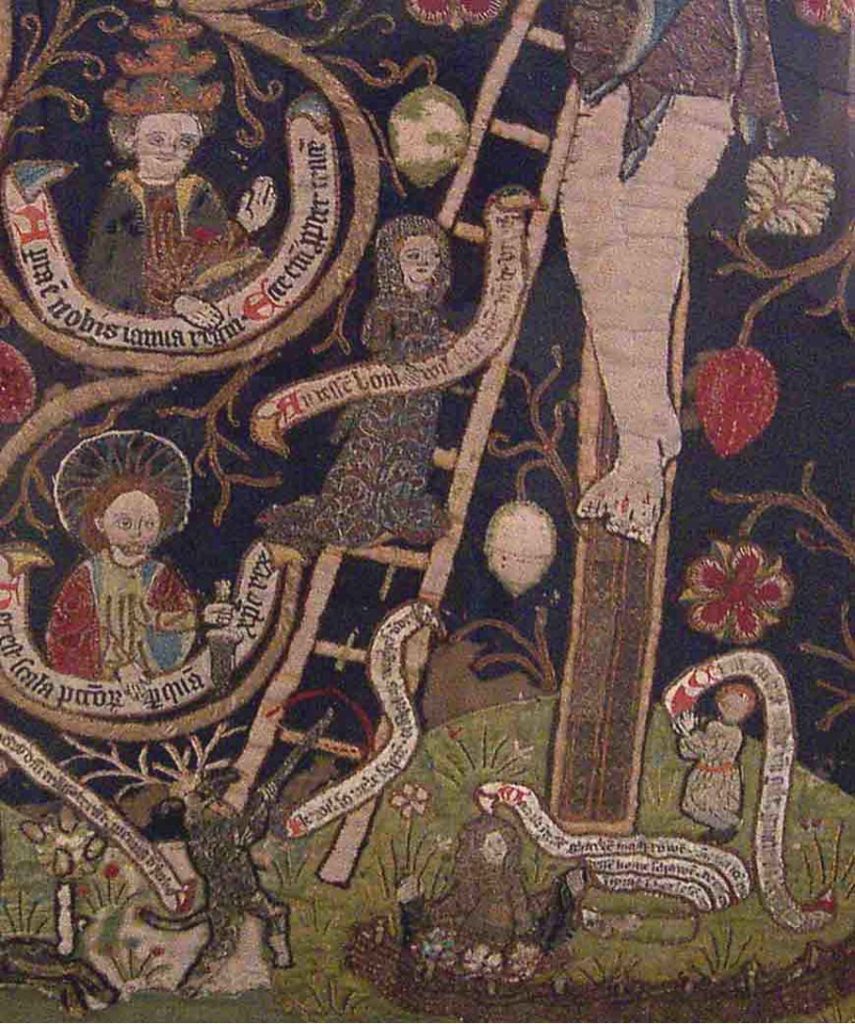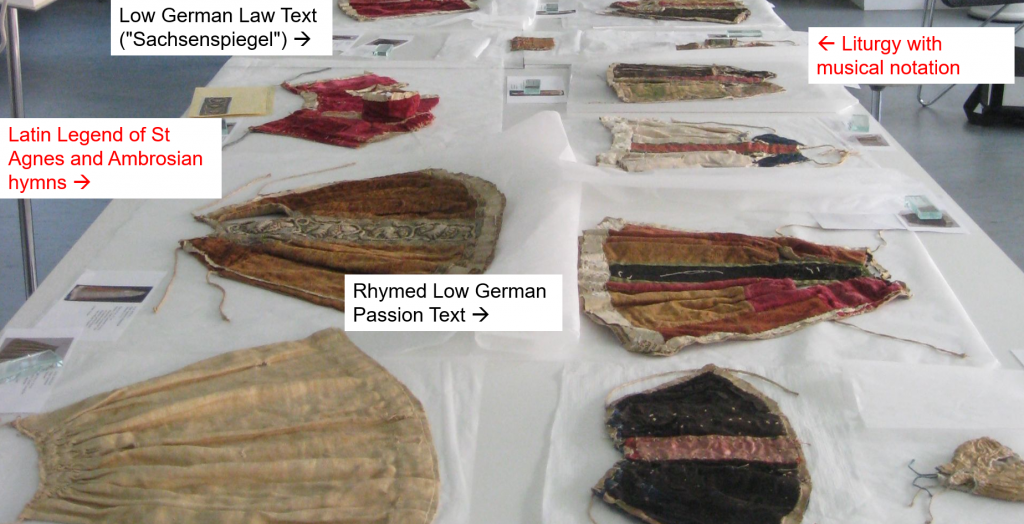Tuesday 19 July 2022, 1–2pm (BST)
A year ago, Nicole Gilroy, Head of Book Conservation, and Alice Evans, Assistant Book Conservator, at the Special Collections department at the Bodleian Libraries, started a Textiles in Libraries project. This involved surveying and assessing the current condition and housing of the collections, inviting students and experts to visit, and giving insight to what is happening behind the scenes at the library in a series of talks. In the final talk of this year, they take stock of what has been achieved and where to go next; they asked also me, Henrike Lähnemann, to share my view of the importance of this initiative for researchers.
In my five-minute statement I will concentrate on one concrete puzzle which the project has helped me to approach systematically: how common are curtains in manuscripts? And how best to call them? Are they more practical or more symbolic? And what about the actual material they are made of?

The five minutes won’t allow me to go into the prehistory of this interest, so this blog post is a short explanation of how my interest in the topic started with three very different textile objects from the medieval German-speaking lands which incorporate texts openly or hidden.
Texts in / on Textiles 1: Wichmannsburg Antependium
The first is the Wichmannsburg Antependium, a highly complex hanging made by the nuns of Medingen Abbey for one of the parish churches in their charge which I first saw in 2000. The 3.5m wide patchwork ensemble has parchment strips sewn on together with written-on linen pieces, velvet, gold threat and more. For identifying all of the captions on the piece, I had to delve into the devotional writing of the nuns which then led to the editing work I am currently engaged in.

Antependium made for the parish church of Wichmannsburg by the nunsfrom Medingen, end of the 15th century, Kestner-Museum Hannover. Material cross-over in patchwork technique: Cloth applications from recycled garments and grape velvet, Parchment and cloth strips for speech bubbles; gilded parchment ornaments; pearls for the devil’s horns. Foto: Henrike Lähnemann, by kind permission of the museum.
Text and Textiles 2: Parchment in Dresses for Statues
The second is a project I got involved came about when I was contacted by Wiebke Haase and Tanja Weißgraf, textile conservators in the Textilwerkstatt der Klosterkammer Hannover in Kloster Lüne. They had come across recycled parchment as hem stiffeners for dresses for the sculptures in Kloster Wienhausen. The strips had been cut from liturgical and legal codices but also one unknown Middle Low German passion meditation.

The dresses on the catwalk in the Textile Workshop at Kloster Lüne. More on this in the presentation I gave for the ICON group of Paper Conservators in April 2020: Recycling Parchment. Manuscript Fragments in Medieval Dresses.
Text and Textiles 3: Letters as Padding for a Box
Finally, in 2020 Caroline Danforth from the National Gallery of Art in Washington contacted me to help decipher letters used as padding in a box for a pouch which in turn contained a parchment-backed woodcut – a multilayered object if ever there was one! You can watch Caroline explain the complex story during the annual OMS lecture on medieval objects